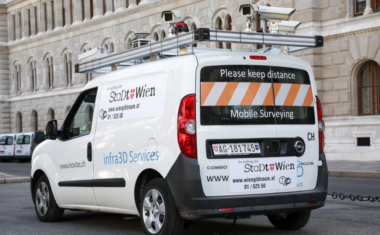The Beacon Technology for People with Low Vision or Blindness
- 2371
- 5 min to read
About the city. There are over 575,000 people who are blind or vision impaired currently living in Australia. Melbourne is developing many projects in support of people with various types of disabilities, in particular, with vision problems.
Goals

A special system is launched to help people with poor vision or blindness move around the city. The device helps not only city residents but also tourists who speak other languages.
Implementation period. The initiative was approved in 2017. The process continues at other locations in the city.
Fact
Local authorities work closely with the city’s nonprofit organizations to improve the city’s environment.
Solutions
![]()
What do the “beacons” mean?
Virtual GPS beacons have been created at intersections along the main streets, public places and underground crossings. The beacons use a phone app to provide detailed audio messages with information that is not available through other map based tools such as Google Maps. This includes the location of obstacles, such as bollards, and information about construction works in the area, traffic jams and so on.
How does it work?
The technology uses GPS and Bluetooth in the user’s phone to access audio messages from nearby beacons. It is designed to be used as an additional tool to complement other mobility aids such as a cane or Guide Dog.
What is the phone app?
The beacons work with either the paid version of Blindsquare or the free Blindsquare Event phone apps, which are commonly used by people with low vision or blindness to access information about key locations.
Who developed it?
The beacon technology has been successfully implemented by Guide Dogs Victoria.
Where in the city already has the beacons?
City Loop train stations, Richmond and Footscray railway stations, Melbourne Zoo, District Docklands Shopping Centre, and the recent Grand Prix.
Remarkably, all messages are available in 25 different languages.

Team
Nonprofit organization Guide Dogs Victoria under the City of Melbourne guidance.
Timeline
The initiative was introduced in 2017. The main attention was paid to inside public buildings navigation. Active work on the project began in 2019. The system was introduced at intersections.
It is known that the system was tested in August 2019. People with low vision or blindness provided advice to improve the messages people receive and ensure the information is helpful and relevant. Tests in the context of signal recognition outside, around intersections.
If you notice an error or inaccuracy in our editorials, please email [email protected] so we can look into it.






